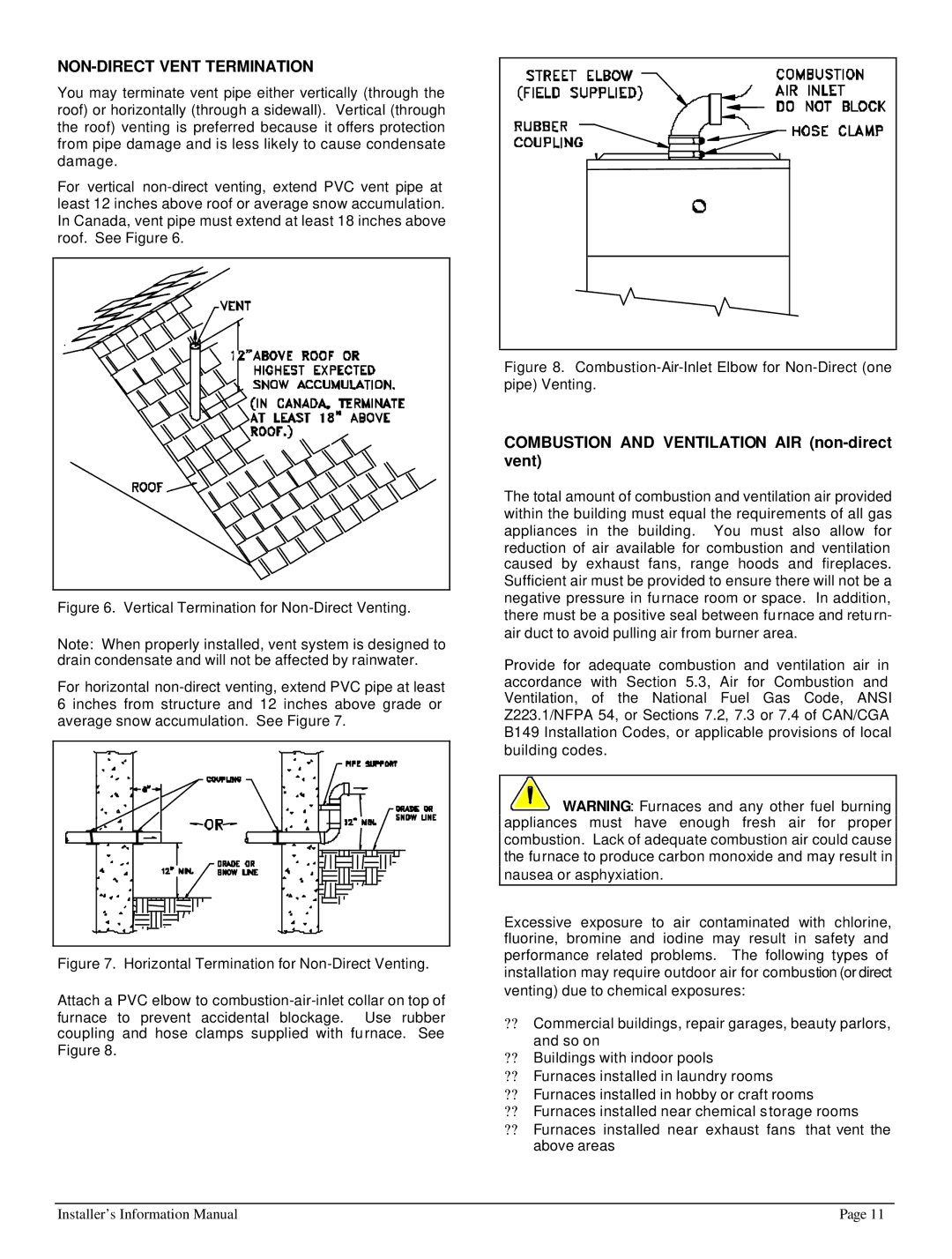
NON-DIRECT VENT TERMINATION
You may terminate vent pipe either vertically (through the roof) or horizontally (through a sidewall). Vertical (through the roof) venting is preferred because it offers protection from pipe damage and is less likely to cause condensate damage.
For vertical
Figure 6. Vertical Termination for Non-Direct Venting.
Note: When properly installed, vent system is designed to drain condensate and will not be affected by rainwater.
For horizontal non-direct venting, extend PVC pipe at least 6 inches from structure and 12 inches above grade or average snow accumulation. See Figure 7.
Figure 7. Horizontal Termination for Non-Direct Venting.
Attach a PVC elbow to combustion-air-inlet collar on top of furnace to prevent accidental blockage. Use rubber coupling and hose clamps supplied with fu rnace. See Figure 8.
Figure 8. Combustion-Air-Inlet Elbow for Non-Direct (one pipe) Venting.
COMBUSTION AND VENTILATION AIR (non-direct vent)
The total amount of combustion and ventilation air provided within the building must equal the requirements of all gas appliances in the building. You must also allow for reduction of air available for combustion and ventilation caused by exhaust fans, range hoods and fireplaces. Sufficient air must be provided to ensure there will not be a negative pressure in furnace room or space. In addition, there must be a positive seal between furnace and return- air duct to avoid pulling air from burner area.
Provide for adequate combustion and ventilation air in accordance with Section 5.3, Air for Combustion and Ventilation, of the National Fuel Gas Code, ANSI Z223.1/NFPA 54, or Sections 7.2, 7.3 or 7.4 of CAN/CGA B149 Installation Codes, or applicable provisions of local building codes.
![]() WARNING: Furnaces and any other fuel burning appliances must have enough fresh air for proper combustion. Lack of adequate combustion air could cause the furnace to produce carbon monoxide and may result in nausea or asphyxiation.
WARNING: Furnaces and any other fuel burning appliances must have enough fresh air for proper combustion. Lack of adequate combustion air could cause the furnace to produce carbon monoxide and may result in nausea or asphyxiation.
Excessive exposure to air contaminated with chlorine, fluorine, bromine and iodine may result in safety and performance related problems. The following types of installation may require outdoor air for combustion (or direct venting) due to chemical exposures:
??Commercial buildings, repair garages, beauty parlors, and so on
??Buildings with indoor pools
??Furnaces installed in laundry rooms
??Furnaces installed in hobby or craft rooms
??Furnaces installed near chemical storage rooms
??Furnaces installed near exhaust fans that vent the above areas
Installer’s Information Manual | Page 11 |
